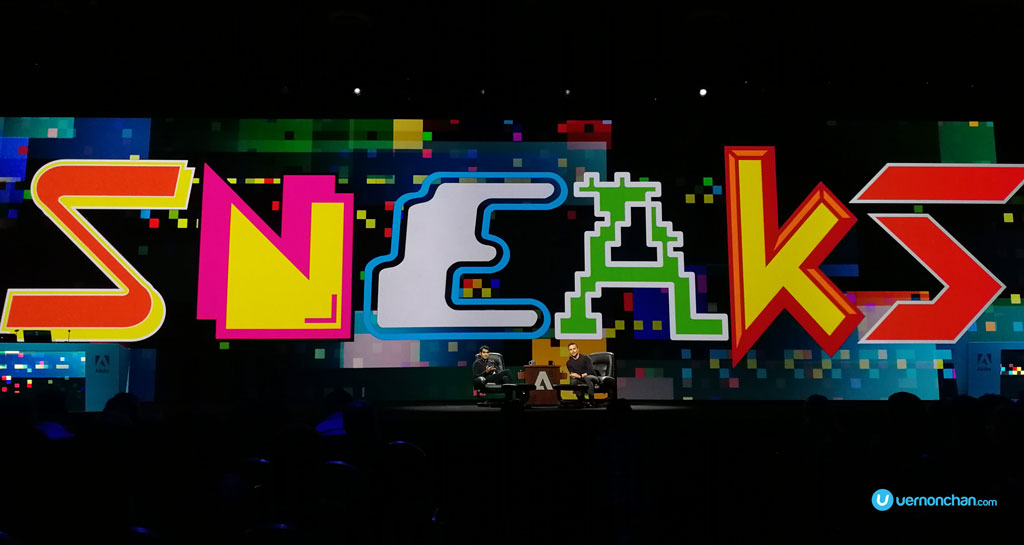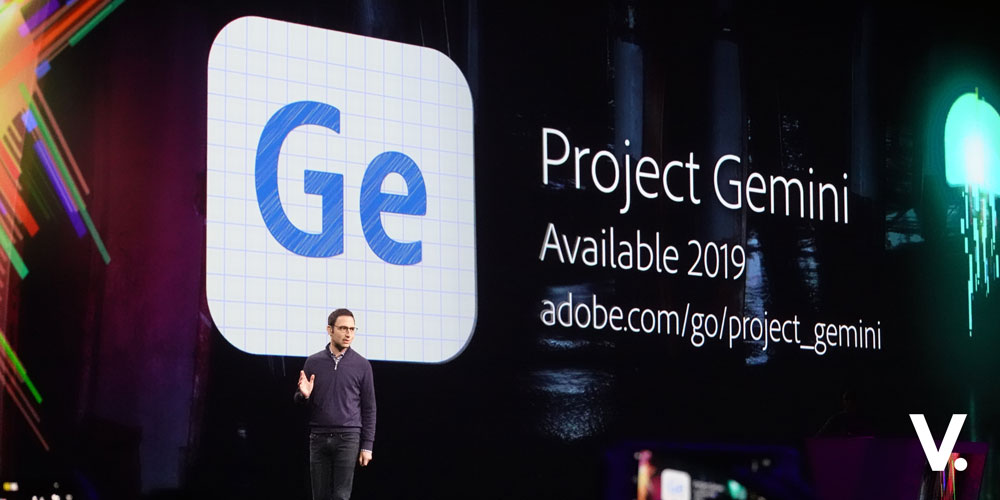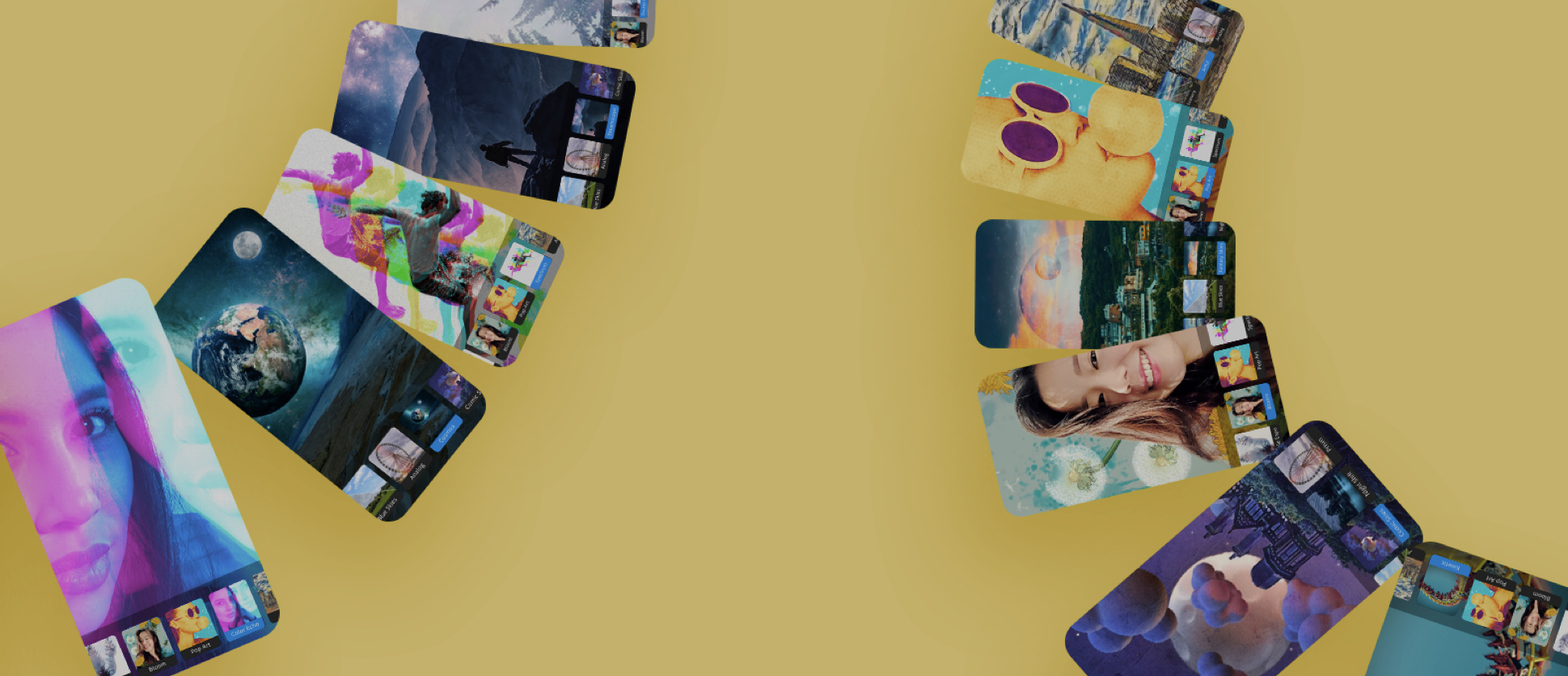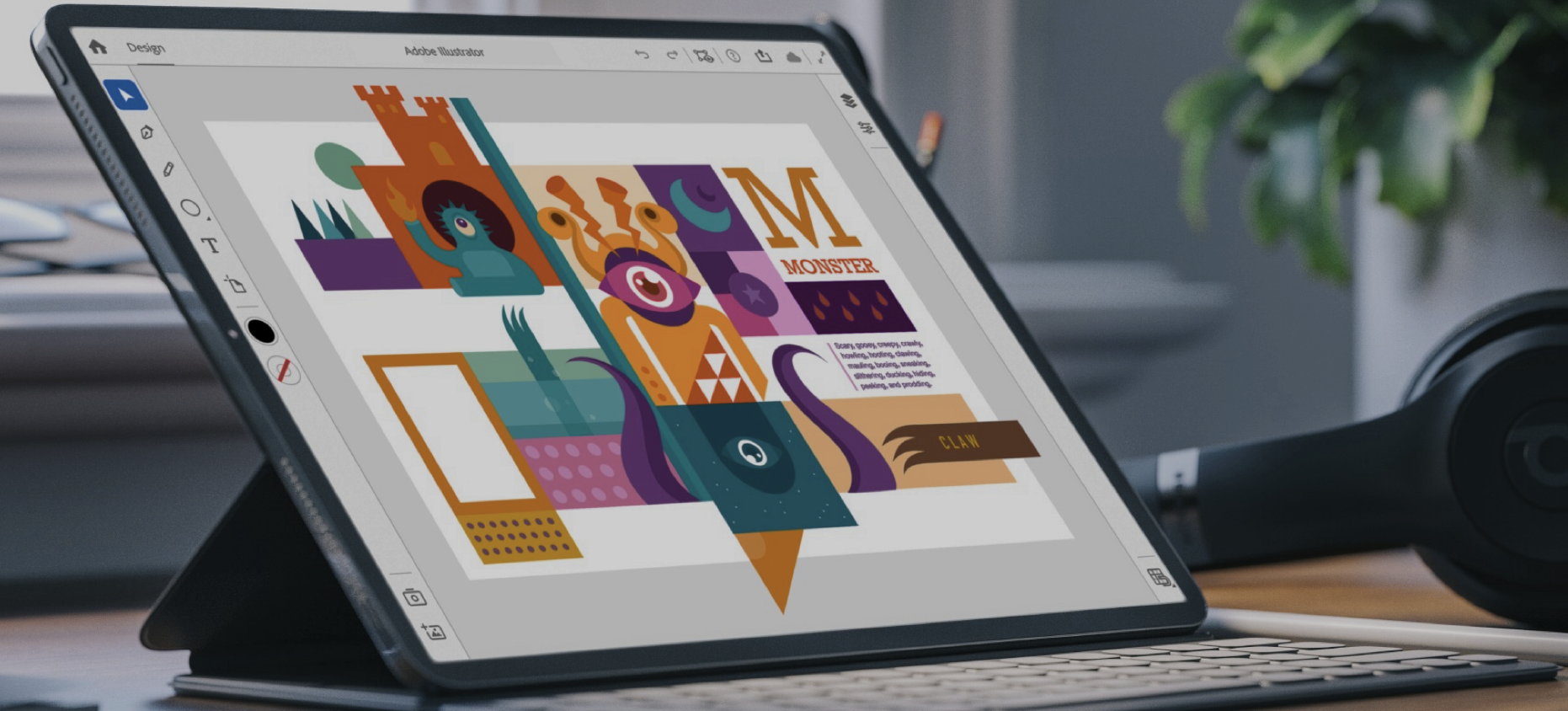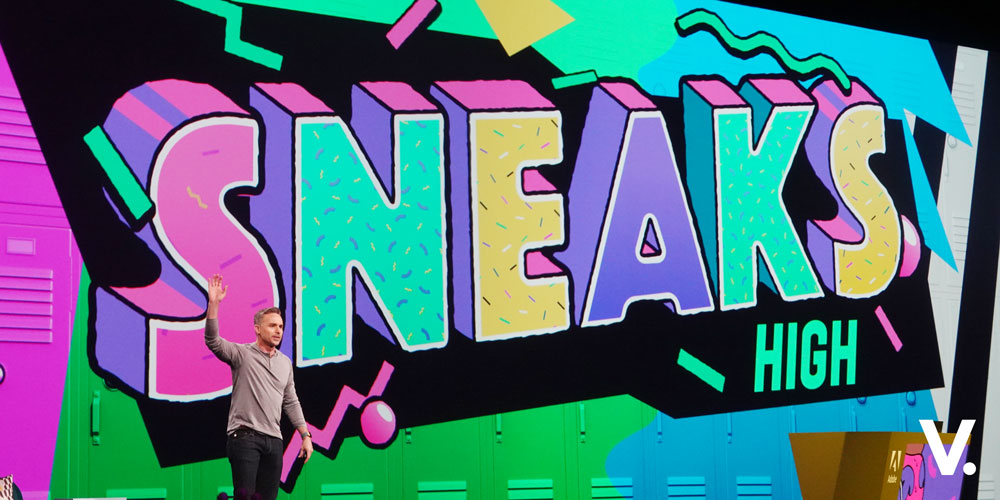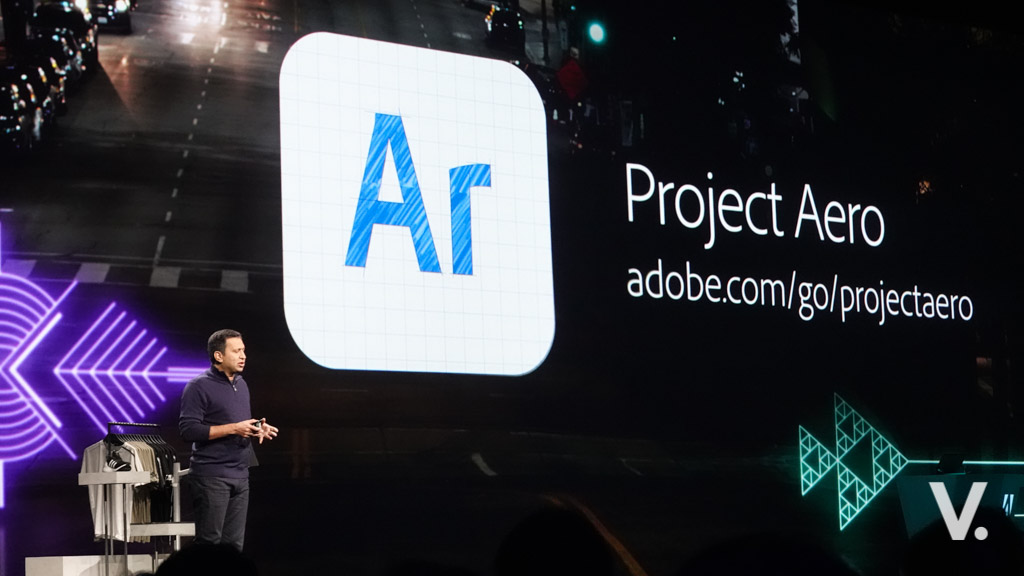After a rocking Day 1 at Adobe MAX 2017 in Las Vegas, attendees headed into Day 2’s packed schedule of speaker keynotes, lab and workshop sessions and the Community Pavilion. But nothing quite blows your mind than the Sneaks show live at MAX.
Sneaks is exactly what you’d imagine. A little peek at radical innovations that brew in Adobe Research labs, and from Adobe product teams (including interns!).
The thing about Sneaks is that these showcases and technologies are works-in-progress and are neither buyable or yet incorporated into any Adobe app.
This year’s Sneaks show live was hosted by Kumail Najiani, comedian and actor who plays “Dinesh” on the HBO series “Silicon Valley,” and Adobe’s own Paul Trani.
Sneaks is one of MAX’s most popular segments, and it didn’t disappoint.
Here’s the full list of awesome Sneaks this year.
#SceneStitch
Graphic designers will love this feature which works like Photoshop’s “content-aware fill” function. Only that it has the help of Adobe Sensei.
Scene Stitch searches for the image you need for editing, then updates the image with what it finds. The cool thing is, it looks through other alternative image types to fit the image.
Check out how it works below:
#ProjectPuppetron
Beautified selfies? So yesterday. With Project Puppetron, you can become an instant animated character, ready for real-time webcam interaction.
The super awesome thing about Puppetron is how quick and intelligent it is. You give it a sample image and your selfie, and it immediately adopts the colours, textures and styles from the sample image to your selfie.
This is one of my favourite Sneaks.
Catch it in action:
#ProjectScribbler
Project Scribbler lets you colourise an image with a single click. If you have an old monochrome photograph, or even a doodle, Project Scribber will intelligently make colour choices to transform the image.
The system is again powered by Adobe Sensei, where the researchers on the project trained the neural network to make colour choices based on what it learned.
It works incredibly fast, and the results are mighty impressive.
The project is a collaboration between Adobe researchers (Chen Fang, Daichi Ito), Georgia Tech (Patsorn Sangkloy, Wenqi Xian, Amit Raj, Varun Agrawal, James Hays) and UC Berkeley (Fisher Yu).
See it in action here:
#PhysicsPak
Physics Pak takes the mundane, often time-consuming task of placing elements in a design away from your hands. What may have taken hours to do, could take just minutes, thanks to the magic of physics.
I wish I had this during my time in advertising.
#ProjectDeepFill
Another handy tool powered by Adobe Sensei, Project Deep Fill brings “content-aware fill” to the next level.
#ProjectCloak
I’d die to have the capability of Project Cloak right now. I’m pretty sure production houses and Hollywood studios would love this too. One of my favourite Sneaks, Project Cloak is yet another “content-aware fill” feature, but this time for video.
It makes it easy to remove elements from video footage, without resorting to the traditional frame-by-frame method.
This Sneak drew plenty “wows” amongst the crowd.
#PlayfulPalette
Whether in Photoshop or Illustrator, designers tend to spend a lot of time creating colour palettes. Mixing colours digitally can be tedious. Playful Palette reimagines the process of mixing colours. What’s cool is that it can even un-mix mixed colours, if you want to.
#SonicScape
Now this, is pretty mind-blowing. Imagine the ability to hear things directionally within 360 content. Sure, the folks at Dolby will be able to show you a thing or two (I love Dolby Atmos) but this is about VR and 360-degree video.
“Ambisonic audio” is where it’s at. Sonic Scape lets you move sound in a VR space, to align with the scene and footage.
This is very cool.
#ProjectLincoln
Data visualisation. IMHO, an artform. There’s nothing like an infographic that’s data-driven but visually appealing. But creating data-driven charts is time-consuming. What if it can be automatically done based on the data you want to present?
Project Lincoln automates the design and production of creating infographics, borrowing the “repeat grid” feature from the excellent Adobe XD.
#ProjectQuick3D
Now this is pretty impressive. Even if you can’t do 3D, this project will give you the ability to. It easily converts a doodle or a simple sketch to a 3D model that can be used in applications like the new Adobe Dimension CC.
It uses Adobe Sensei’s machine learning to search Adobe Stock and presents you with a matched 3D model.
#ProjectSidewinder
Another VR solution that adds more depth and real-world immersion. The challenge with VR is that the user (camera) sits in one place and you simply pan around by moving your head or aligning the direction of your body.
With Sidewinder, it adds depth to the VR video. When you kneel with the VR headset on, you also kneel in the VR space. When you move your head around a corner, you actually see the side of the corner.
This is pretty cool, and I can’t wait to see how they go with this.
Which is your favourite Sneak?
Stay updated @ Adobe MAX
Adobe MAX 2017 conference happens at The Venetian, Las Vegas Boulevard, Las Vegas, Nevada from 18-20 October 2017.
Follow me for updates: vernonchan.com/creative/adobemax, and also on Twitter, Facebook and Instagram using hashtags #AdobeMAX #VCAdobeMAX
Also follow Adobe MAX and Adobe Southeast Asia on Facebook; and Adobe MAX on Twitter.
Disclaimer: I’m an invited guest at Adobe MAX. Conference tickets, travel and accommodation are sponsored by Adobe. My opinions are my own.
Source: Adobe Blog


